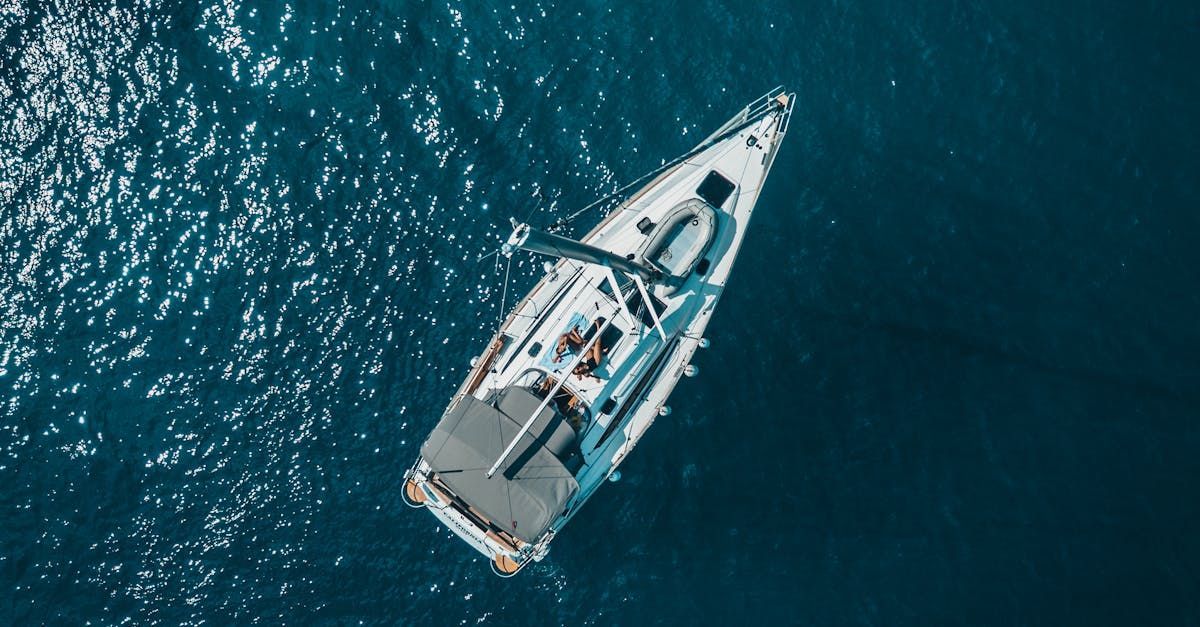Vertical Boat Lift Installation: A Step-by-Step Guide for Charleston Boaters

Vertical boat lift installation is a straightforward process that can be completed in a few days with the right tools and knowledge. This guide will walk you through the steps to install a vertical boat lift in Charleston's waterways, ensuring your vessel stays safe and dry when not in use.
Key takeaways:
- Vertical boat lifts are ideal for Charleston's tidal waters
- Proper site assessment is crucial before installation
- Professional installation is recommended for safety and longevity
- Regular maintenance keeps your boat lift functioning optimally
- Local regulations must be followed for installation in Charleston waters
Understanding Vertical Boat Lifts
Vertical boat lifts are popular among Charleston boaters due to their efficiency and suitability for our tidal waters. These lifts use a vertical lifting mechanism to raise your boat out of the water, protecting it from marine growth and water damage.
Benefits of vertical boat lifts
Vertical boat lifts offer several advantages for Charleston boat owners. They provide excellent protection for your vessel, extending its lifespan and reducing maintenance costs. These lifts also make it easier to access your boat, as you can lower it into the water whenever you're ready to set sail.
Types of vertical boat lifts
There are several types of vertical boat lifts available in Charleston. Cable lifts are common and work well for most recreational boats. Beamless lifts are another option, offering a sleek look and unobstructed access to your vessel. For larger boats, elevator lifts might be necessary.
Site Assessment for Vertical Boat Lift Installation
Before installing a vertical boat lift in Charleston waters, it's essential to assess your site properly. This step ensures that the lift will function correctly and safely in your specific location.
Water depth considerations
Charleston's tidal range can significantly impact the functionality of your boat lift. Measure the water depth at both high and low tides to ensure your lift will work effectively throughout the tidal cycle. You'll need enough depth to accommodate your boat's draft plus the lift's minimum water requirements.
Bottom conditions
The seabed in Charleston varies from muddy to sandy. Understanding your specific bottom conditions is crucial for choosing the right anchoring method for your boat lift. Soft bottoms may require special anchoring techniques to ensure stability.
Choosing the right vertical boat lift
Selecting the appropriate vertical boat lift for your Charleston dock depends on several factors. Consider your boat's size, weight, and the specific conditions of your waterfront property.
Lift capacity
Always choose a lift with a capacity that exceeds your boat's weight. This extra capacity accounts for additional gear and ensures the lift's longevity. In Charleston's saltwater environment, it's wise to go with a higher capacity to counteract the corrosive effects of salt.
Lift dimensions
Measure your boat's length, beam, and height to ensure the lift you choose can accommodate it comfortably. Remember to account for any additional features like outriggers or bow pulpits that might affect the fit.
Preparing for Installation
Proper preparation is key to a smooth vertical boat lift installation in Charleston. This phase involves gathering necessary materials, obtaining permits, and setting up your work area.
Required tools and materials
You'll need a variety of tools for installation, including wrenches, drills, and safety equipment. Specific materials like galvanized bolts and marine-grade lumber are essential for withstanding Charleston's saltwater environment.
Obtaining necessary permits
In Charleston, you'll need to obtain permits before installing a boat lift. Contact the South Carolina Department of Health and Environmental Control (DHEC) for information on required permits and environmental considerations.
Step-by-step Installation Process
Installing a vertical boat lift requires careful attention to detail and adherence to safety protocols. While professional installation is recommended, understanding the process can help you make informed decisions.
Setting the pilings
The first step is to set the pilings that will support your boat lift. In Charleston's soft bottoms, this often involves driving the pilings deep into the seabed to ensure stability.
Mounting the lift
Once the pilings are secure, the lift mechanism is mounted onto them. This process requires precision to ensure the lift is level and properly aligned.
Installing the bunks
Bunks are installed to support your boat when it's lifted. These need to be positioned correctly to distribute the boat's weight evenly and prevent damage.
Wiring the electrical components
If you're installing an electric lift, proper wiring is crucial. In Charleston's marine environment, all electrical components must be properly sealed and grounded to prevent corrosion and ensure safety.
Testing the lift
Before using your new boat lift, it's essential to test it thoroughly. This includes running it through its full range of motion and testing it with weight to ensure it operates smoothly and safely.
Safety Considerations
Safety should be your top priority when installing and using a vertical boat lift in Charleston waters. Always follow manufacturer guidelines and local regulations to prevent accidents.
Personal safety equipment
When working on your boat lift, use appropriate safety gear such as life jackets, non-slip shoes, and gloves. Charleston's hot summers make it important to stay hydrated and protected from the sun during installation.
Lift operation safety
Once your lift is installed, make sure everyone who uses it understands proper operation procedures. This includes weight limits, proper boat positioning, and emergency stop procedures.
Maintenance Tips for Vertical Boat Lifts
Regular maintenance is crucial for keeping your vertical boat lift functioning properly in Charleston's marine environment. Saltwater can be particularly harsh on mechanical components.
Regular inspections
Conduct visual inspections of your lift regularly, looking for signs of wear or corrosion. Pay special attention to cables, pulleys, and electrical components.
Cleaning and lubrication
Rinse your lift with fresh water after each use to remove salt buildup. Regularly lubricate moving parts with marine-grade lubricants to prevent corrosion and ensure smooth operation.
Annual professional service
Consider having your lift professionally serviced annually. A trained technician can spot potential issues before they become major problems and ensure your lift is operating at peak efficiency.
Common Issues and Troubleshooting
Even with proper maintenance, you may encounter issues with your vertical boat lift. Being able to identify and address common problems can save you time and money.
Uneven lifting
If your boat isn't lifting evenly, it could be due to unbalanced weight distribution or issues with the lift mechanism. Check your boat's positioning and inspect the lift components for any signs of wear or damage.
Motor problems
Electric lifts may experience motor issues over time. If your lift is slow to respond or makes unusual noises, it may be time for a motor inspection or replacement.
Cable wear
Cables are a critical component of many vertical boat lifts. Inspect them regularly for fraying or rust, and replace them at the first sign of significant wear.
Environmental Considerations
Installing a vertical boat lift in Charleston requires attention to environmental regulations and best practices to protect our local ecosystems.
Protecting marine life
Be mindful of marine habitats during the installation and use of your boat lift. Avoid disturbing seagrass beds or oyster reefs, which are crucial to Charleston's coastal ecosystem.
Minimizing water pollution
Use environmentally friendly lubricants and cleaning products to minimize pollution. Properly dispose of any chemicals or old parts to prevent them from entering the water.
Local Resources for Vertical Boat Lift Installation
Charleston offers several resources for boat owners looking to install a vertical boat lift. These local experts can provide valuable advice and services tailored to our unique coastal environment.
Local marine contractors
Several reputable marine contractors in Charleston specialize in boat lift installation. They have experience with local conditions and regulations, ensuring your installation meets all requirements.
Supplier options
Charleston has a variety of marine supply stores and boat lift dealers. These businesses can help you choose the right lift for your needs and often offer installation services as well.
Cost Considerations for Vertical Boat Lift Installation
Installing a vertical boat lift in Charleston is a significant investment. Understanding the costs involved can help you budget effectively for this project.
Initial installation costs
The cost of a vertical boat lift and its installation can vary widely based on factors like lift capacity, type, and site conditions. In Charleston, you can expect to pay anywhere from $5,000 to $20,000 or more for a complete installation.
Long-term savings
While the initial cost may be high, a vertical boat lift can save you money in the long run. By protecting your boat from constant water exposure, you'll reduce maintenance costs and extend your vessel's lifespan.
Vertical Boat Lift Alternatives
While vertical boat lifts are popular in Charleston, they're not the only option for keeping your boat out of the water. Consider these alternatives if a vertical lift doesn't suit your needs.
Floating lifts
Floating lifts can be a good option for areas with significant tidal changes. They rise and fall with the water level, ensuring your boat is always at the right height.
Boat elevators
For larger vessels or unique dock configurations, boat elevators might be a better choice. These systems can handle heavier weights and offer more flexibility in terms of installation location.
Future Trends in Vertical Boat Lift Technology
The boat lift industry is constantly evolving, with new technologies emerging to make lifts more efficient, user-friendly, and environmentally sustainable.
Smart lift systems
Future vertical boat lifts may incorporate smart technology, allowing you to control and monitor your lift from your smartphone. This could include features like remote operation and maintenance alerts.
Eco-friendly materials
As environmental concerns grow, we're likely to see more boat lifts made from sustainable materials that can withstand Charleston's marine environment while minimizing ecological impact.
Conclusion
Installing a vertical boat lift in Charleston can significantly enhance your boating experience, protecting your vessel and making it easier to access the water. By understanding the installation process, maintenance requirements, and local considerations, you can ensure your boat lift serves you well for years to come. Remember to always prioritize safety and environmental responsibility in your boating activities. For more information, you can visit our website or contact us.
- Vertical Boat Lift Type Weight Capacity (lbs) Typical Installation Time (days) Average Lifespan (years) Cable Lift 4,000 - 20,000 2-3 15-20 Beamless Lift 4,500 - 30,000 3-4 20-25 Elevator Lift 10,000 - 50,000+ 4-7 25-30 Maintenance Task Frequency Estimated Cost in Charleston Visual Inspection Monthly DIY Lubrication Quarterly $50 - $100 Cable Replacement Every 3-5 years $500 - $1,500 Professional Service Annually $200 - $500 Key factors to consider when choosing a vertical boat lift for Charleston waters:
- Lift capacity about boat weight
- Corrosion resistance of materials
- Compatibility with local tidal range
- Ease of operation and maintenance
- Compliance with local environmental regulations


